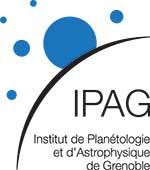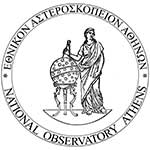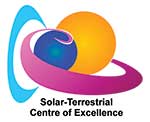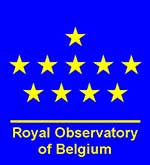This event has been cancelled!
Please send an email to sw4e@oma.be if your have any enquiry about your registration.
Preliminary Program
Day 1: Tuesday, 18 October 2016
8:30-9:00 Registration
9:00-10:30 Introduction on SW mechanisms Mauro Messerotti
Space Weather (SW) refers to the physical state of space, whose perturbations can significantly modify the physical state of Earth's (and planets) magnetosphere, atmosphere, lithosphere, hydrosphere and biosphere, i.e., the region of space that embraces the Earth named Geospace. This action occurs via injection of energy by electromagnetic radiation (high energy photons) and highly energetic particles produced primarily by the Sun but also by galactic and extragalactic sources.
This aspect is indicative of the physical coupling among all physical systems in the Universe and deserves a broader investigation approach that characterizes the Cosmo-climatology, of which the study of Space Weather is a sub-discipline.
In this lecture, we will give an overview of the physical environments and physical processes that occur in this complex system of coupled systems by focusing on the conceptual tools that are used to describe the phenomenology in a simplified framework at the highest level of abstraction.
Main points that will be elaborated:
- Definitions and terminology relevant to SW.
- The complex system of coupled physical systems: stars, planets, space environments.
- A star-planet system case study: The Sun and the Earth.
- Energy carriers (e.g. electromagnetic outbursts, solar energetic particles, Coronal Mass Ejections (CMEs), Solar Wind Streams) and coupling conditions at the planetary environments (i.e., interplanetary and planetary (if any) magnetic field, and their interplay).
11:00-12:30 Introduction on SW effects Mauro Messerotti
Space-originated perturbations are characterized by different time, space and energy scales and impact the planetary environments by originating, e.g. in the case of the Earth, a large variety of effects both on biological and on technological systems, that experience an augmented radiation level and modified physical conditions (e.g. surface charging, modified propagation for radio waves, intense induced currents, etc.).
Aim of this lecture is to provide an overview of the phenomenology with special attention to the major impacts on technological systems that span from space systems to ground systems, such as:
- In space:
- Satellites.
- Manned space missions.
- Space-based telecommunications.
- Aviation and avionics.
- On the ground:
- Power grids.
- Drilling activities.
- In space:
12:30-14:00 Lunch
14:00-15:30 Background: Relation to Solar activity; the Geoelectric field and its modelling Eija Tanskanen / Ari Viljanen
- Solar storms and solar activity measures
- Solar wind disturbances driving GIC
- State of the magnetosphere during GIC
- Orders of magnitude, statistics of dB/dt and GIC from daily to decennial scales
- Basics of geomagnetic induction
- Use of magnetometer arrays and ground conductivity models to assess the electric field
16:00-17:30 Methodology for simulation of GIC in power systems and pipelines Risto Pirjola
- Power grids: matrix formulation based on DC description
- Pipelines: Distributed source transmission line theory
18:30 School Dinner at Salons Georges, Hogeschoolplein 15
Day2: Wednesday, 19 October 2016
9:00-10:30 Practicum on GIC and solar measurements Eija Tanskanen
- Introduction to Substorm Zoo browser-based tools
- Browser-based tools for magnetic field data analysis
- GIC identification from historical ground-based data, basics of statistical tools for long-term data
- Social data analysis tools for GIC science e.g. easy sharing of files, own event lists produced and comments for the data
11:00-12:30 Presentations by the participants
12:30-14:00 Lunch
14:00-15:30 Assessment of GIC hazards in EU power networks Ari Viljanen
- European-wide modelling (EURISGIC): geographic and temporal statistics; understanding the effect of different factors on GIC: geomagnetic variations, ground conductivity, structure of the grid (Ari)
16:00-17:30 Prediction of extreme GIC Alan Thomson
- Characterizing extreme space weather events based on statistical analysis and simulations
- Impact of extreme space weather events on European grids
Day 3: Thursday, 20 October 2016
9:00-10:30 Monitoring and forecasting Ari Viljanen / Alan Thompson / Peter Wintoft
- Recording of GIC by magnetometers
- Electric field recordings
- General overview of forecast frameworks from Sun to Earth relevant to GIC
- Forecast lead times of solar and interplanetary phenomena related to GIC
- Empirical forecast models
- Forecast verification
11:00-12:30 Practicum: Real-time analysis of GICs Eija Tanskanen
- Real-time data analysis exercise: solar, solar wind and ground data
- Building an own GIC monitoring view by using Dashboard tool
- Lab Notebook tool for reporting analysis results on-line
12:30-14:00 Lunch
14:00-15:30 Technological impacts of GIC on power grid infrastructure Olof Samuelsson
Including:- Different types of transformers
- Increased amount of harmonics in a power system due to saturation of transformers
- relay misoperations
- increased reactive power demands
- voltage fluctuations
16:00-17:30 Practicum







